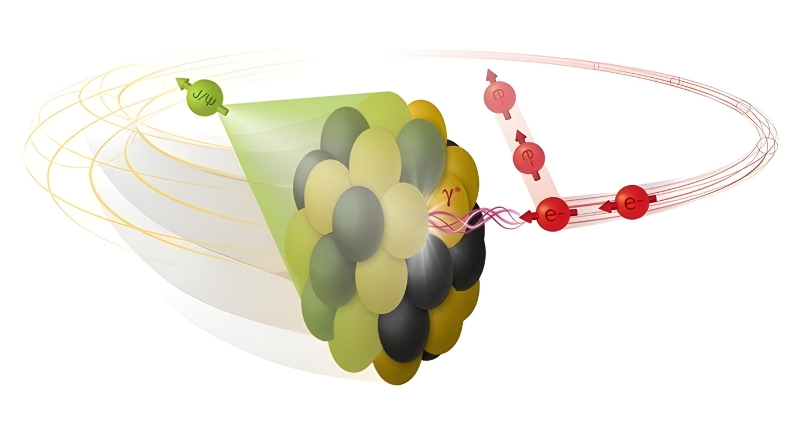Atomic research helps pave the way for new discoveries in nuclear physics
Wayne State Physics Professors Wenbin Zhao and Chun Shen in collaboration with scientists at Brookhaven National Laboratory and the University of Jyvaskyla in Finland have developed a new way to study the shapes of atomic nuclei and their internal building blocks.

As highlighted by the Department of Energy, this theoretical work led by Dr. Zhao relies on modeling the production of certain particles from high-energy collisions of electrons with nuclear targets. Such collisions will take place at the future Electron-Ion Collider (EIC), a state-of-the-art nuclear physics research facility being built at Brookhaven Lab.

The research predicts that EIC collisions that exclusively produce single vector mesons will be sensitive to the detailed structure of the nuclear target. In these collisions, the target may stay intact or break up. When it breaks up, the cross-section, which is a measure of the probability that the process will occur, is sensitive to fluctuations in the target.
These can be driven by position fluctuations of the neutrons and protons. The new work shows that when the target is deformed, these fluctuations are significantly modified, changing the measured cross-section.
Because the measurements are done at much higher collision energy than traditional nuclear structure experiments, the interactions are sensitive to the gluon distributions inside the protons and neutrons of the nucleus. Measuring gluon distributions inside the nucleus, rather than the distribution of electric charge, will provide new insight into how these two distributions differ and how the gluon distribution depends on the energy used to make the measurement.
This technique opens a new direction for research at the EIC and could lead to important information that complements information from traditional nuclear structure experiments. It will help scientists understand how nuclear shapes evolve with energy and provide new, previously inaccessible information on the nuclear structure.
The work was recently published in Physical Review Letters.